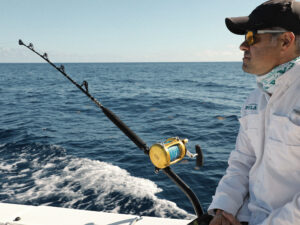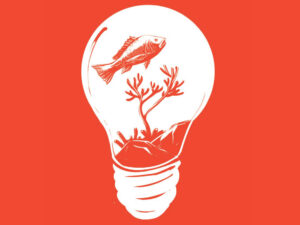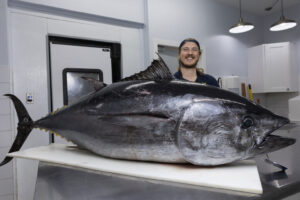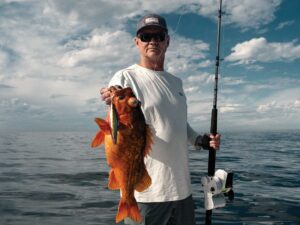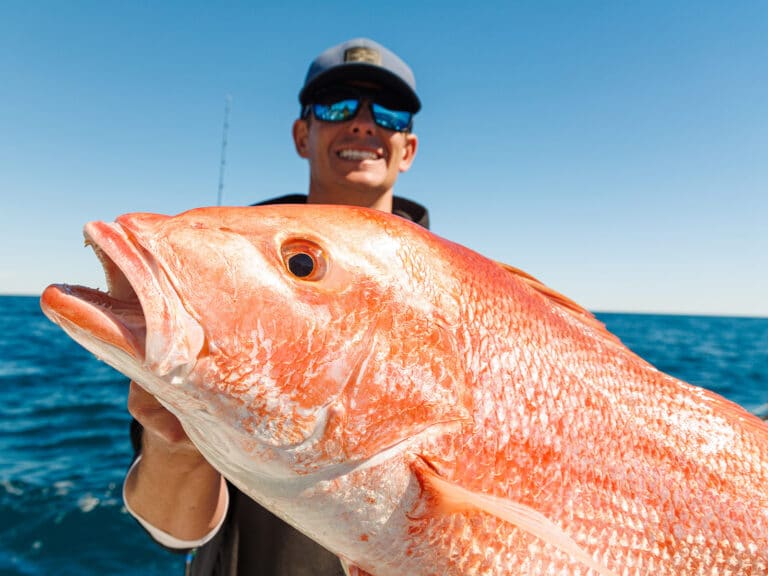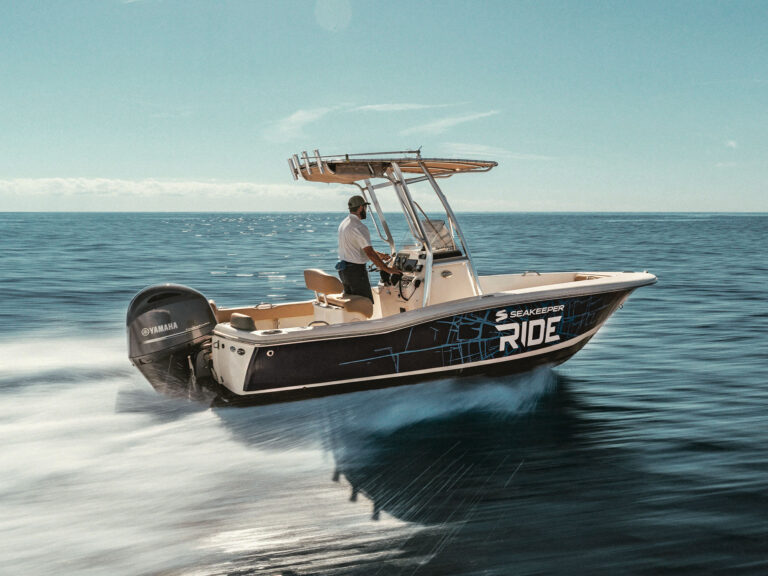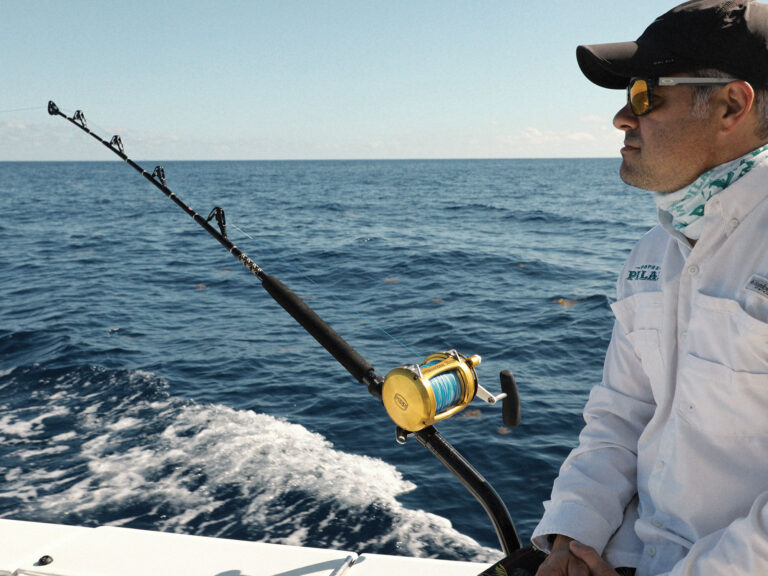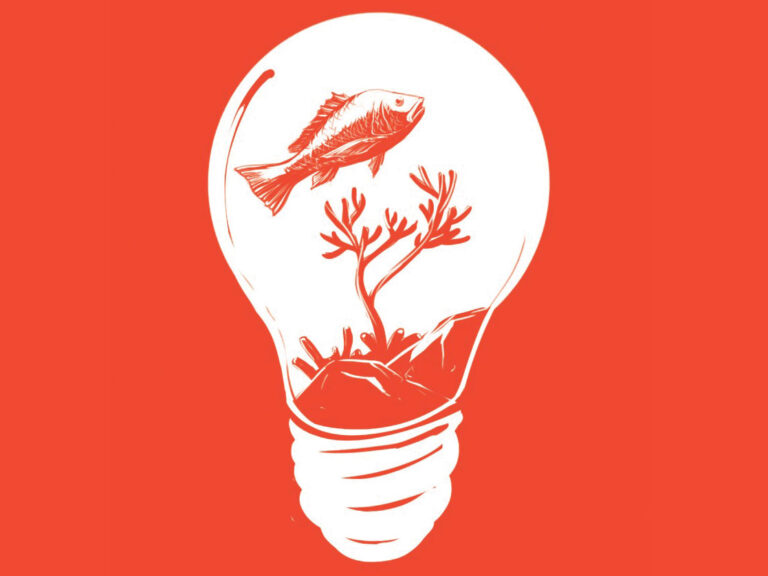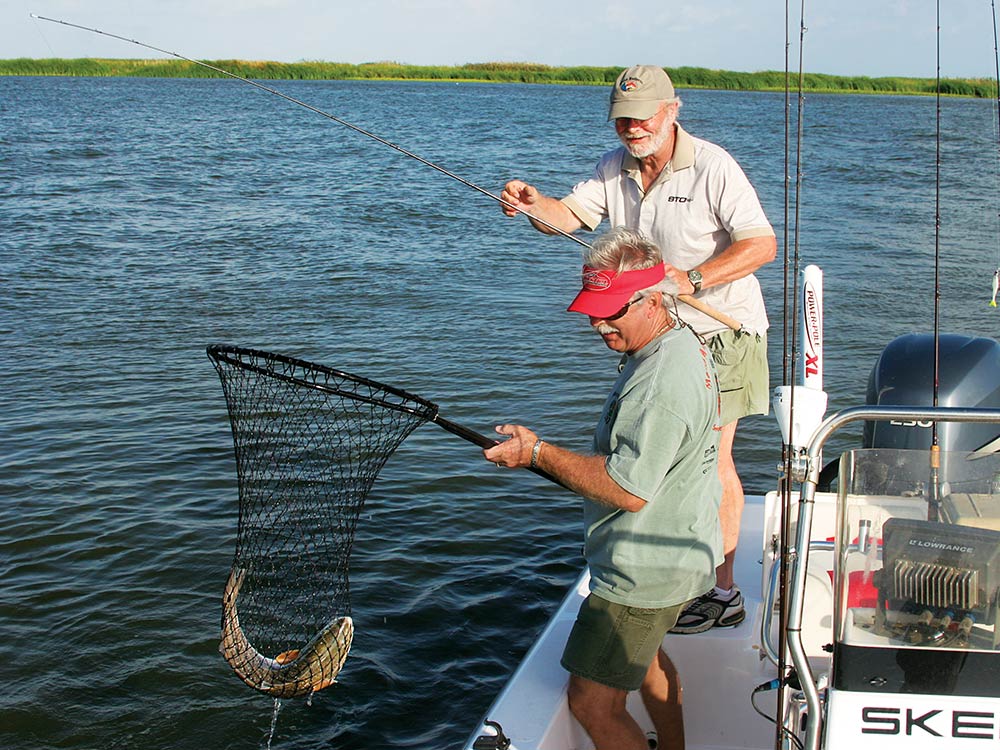
A cold wind howling from the open Gulf of Mexico made for a rough ride and disrupted the bait schools that redfish usually key in on in Barataria Bay, Louisiana, in the spring.
Ken Chaumont ran his 19-foot bay skiff up a dark tidal creek, looking for calm water, and the moment he switched from combustion to electric power, I saw the boils of feeding fish just ahead. “Reds!” said Chaumont as several fins and tails broke the surface.
Chaumont quickly got us within casting range with the trolling motor, and we fired our lures toward some reds feeding — with their backs out of the water — along the marshy waterway. Both his soft-plastic jerkbait and my spinnerbait immediately got hit, and we set the hooks on a matching pair of 5-pounders.
It required minor boat repositioning to get us back in business, and the action continued for a couple of hours, during which we caught several dozen reds up to 8 pounds that, taking advantage of the higher water caused by the strong push of persistent gales, were gorging on crabs along the banks of the sheltered tidal creek. That redfish bonanza on an otherwise tough angling day illustrates a great lesson: Game fish go where food is. That holds true for trout, tarpon, stripers, snook, flounder and every sport fish. And creeks are often where that predator-meets-easy-prey scenario plays out.
Inshore Structure Clues for Fishing
In tidal streams, fish find vulnerable food in flooded brush, amid mangrove roots and shoreline debris, and around submerged logs, dock pilings, bridge abutments, dilapidated boats and barges. Such structures are sure to have marine organisms growing on them, which are the basis of the food chain that includes the forage that game fish hunt. A strong tide or wind-driven current forces baitfish, crabs and shrimp into spots where they become easy pickings for predators.
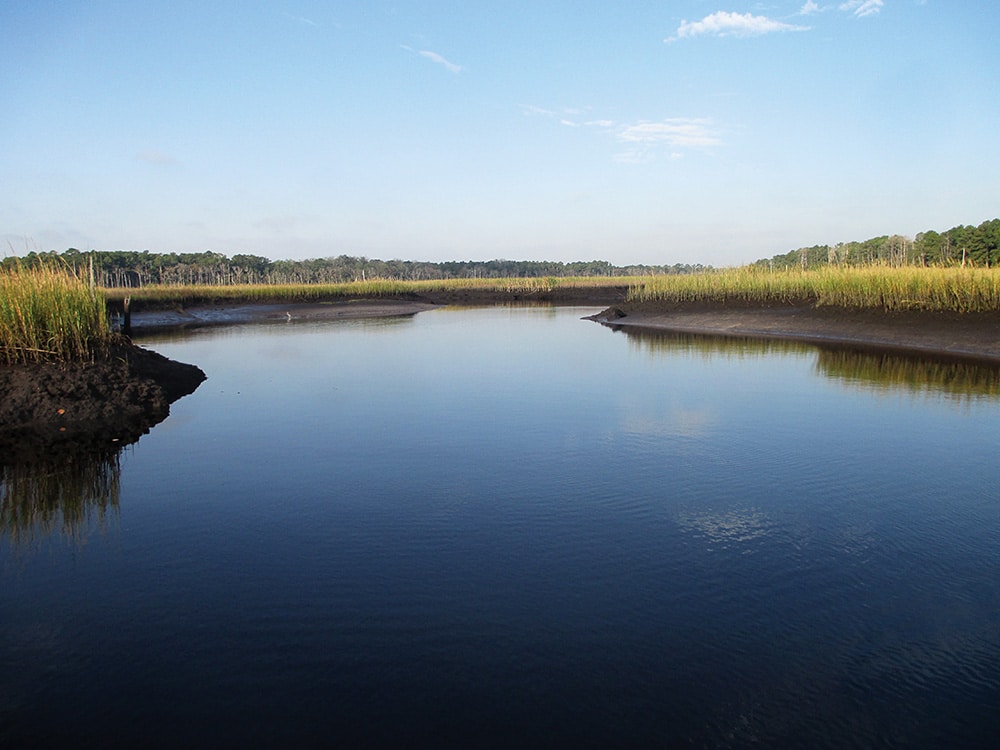
That structure also provides cover for predators. In a creek, a hole slightly deeper than its surroundings is a great place to find snook, reds, striped bass and even tarpon waiting for baitfish or crustaceans swept by the moving water.
At times, presenting lures and baits to fish in the tangles of flooded brush seems impossible. Working the outer edges often pays off; however, anchoring up-current and presenting natural baits above the spot or along the edges using a popping cork or slip float is usually best. Chumming with cut or live bait is another option. Not only does that turn on the fish, but it also draws them away from cover where the odds of landing them greatly increase.
Bottlenecks Concentrate Fish
Almost anywhere water funnels into a tight or constricted spot of a creek, you’re bound to find predators. Most tidewater streams are irregularly shaped, with wide spots and pockets or bayous flowing into them. Bait funnel into such areas, and game fish are sure to be around.
Narrow places are often created by sand spits, shell bars and grass beds in an otherwise wide creek. Find a place with lanes winding through the grass beds, and you’ve found a likely feeding station. Those grassy funnels are choice locations for snook and seatrout in salt creeks off Florida’s Indian and Banana rivers. Meanwhile, shell bars or sand spits in a tidal creek are made to order for striped bass and bluefish looking for a quick meal.
A deep creek bend is one of the easiest hot spots to locate. But such places are notorious for producing only during certain tidal stages, and they yield mixed species seasonally. Such creek bends should be probed carefully with lures and baits specific to your target game. A deep creek bend during a strong tide in winter when water is clear is bound to hold seatrout. The same place during a low moving tide in the fall may be best for flounder. A shell bar tapering into the creek bend could harbor plenty of heavy sheepshead and black drum in spring. In this setting, floating live shrimp or fishing grubs on jig heads may score trout, while small mullet or mud minnows fished deep yield flounder, and crabs fished on the bottom produce sheepshead and black drum.
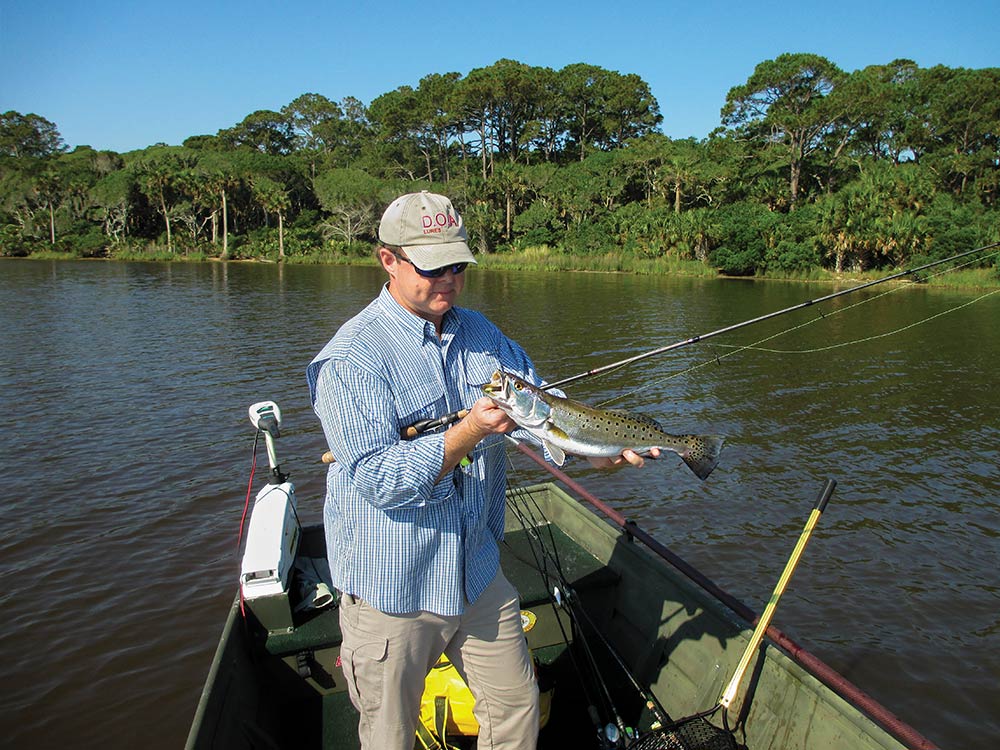
Creek bends hold predators throughout their length, though there are sweet spots that habitually produce better. The heads and tails of deep bends where water tapers up or down (depending on tide and current direction) are natural feeding locations. Some deep bends have a well-defined drop-off or ledge where fish concentrate. Other deep bends have a shallower side where a sandbar or shell bank holds feeding fish.
In regions with big tidal differentials like the Carolinas and Georgia, it’s common to find mud flats or aprons inside the larger creeks. Because they’re shallow and the bottom usually consists of a black, gooey mud, such areas are overlooked by many anglers. But during low tide, mud bottom is exposed and quickly warmed by the sun. So, in cool weather, when a degree or two makes a big difference, those flats and aprons draw both bait and a variety of sport fish when the tide floods over them.
Find the Baitfish, Find the Fish
Swirling eddies are also important. Sometimes you find an eddy near a deep creek bend, but most are down-current from a creek bar or the mouth of a smaller tributary. An eddy typically has deeper, slower-moving water than the surrounding area and is a natural trap for bait. This creates a perfect predator ambush site. But all the water around an eddy should be fished thoroughly, since bars, drop-offs, current seams and the like harbor bait and feeding game fish.
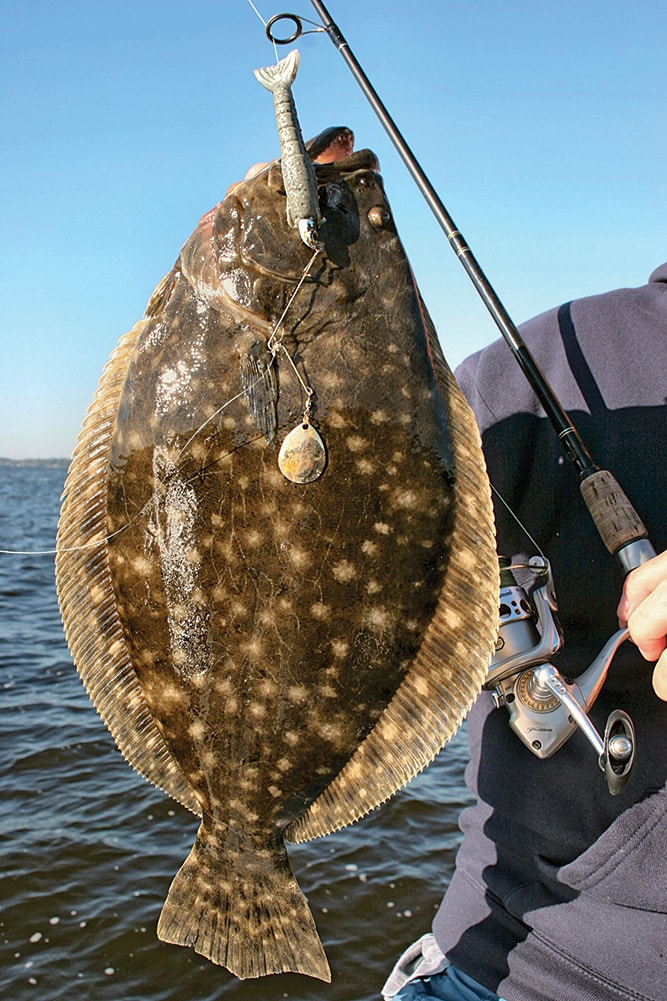
Perhaps the ultimate spot to consistently find action is where several smaller creeks form a junction or merge into a larger tidal creek. By their nature, such spots offer a wide variety of prime feeding stations, like deep holes, funnels, shell bars, sand spits and grass beds, where predators wait for swift currents and tides to serve up disoriented shrimp, crabs and baitfish.
Remember, vulnerable forage is the key to understanding where game fish will hold and feed in tidal creeks.
Shoreline Structure Strategy and How to Map the Creek Bends
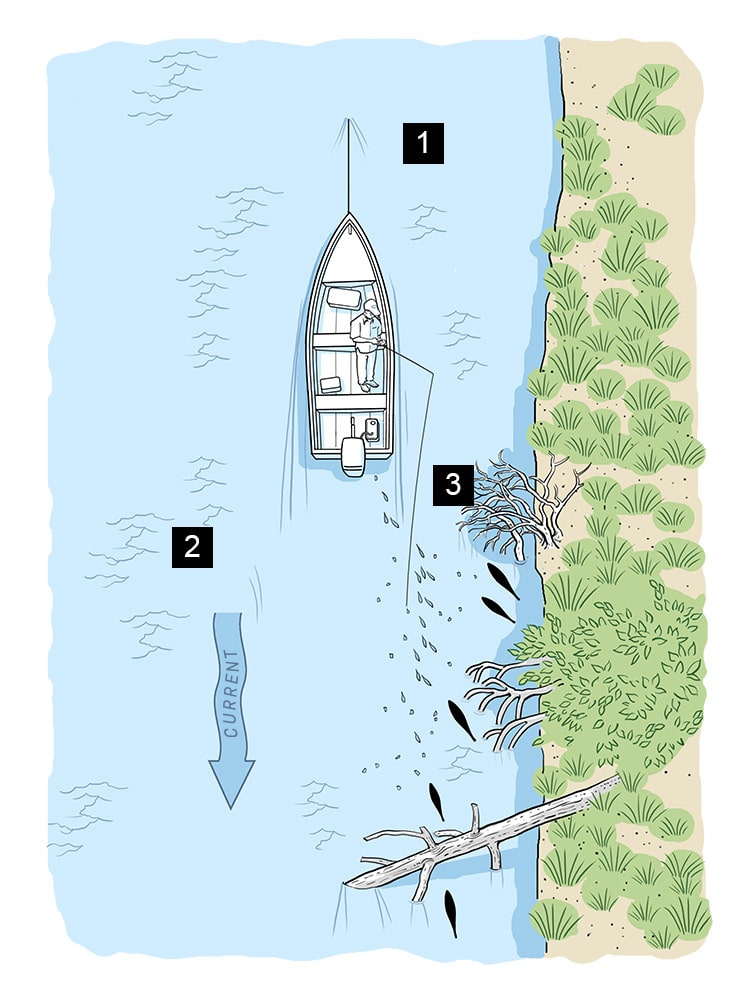
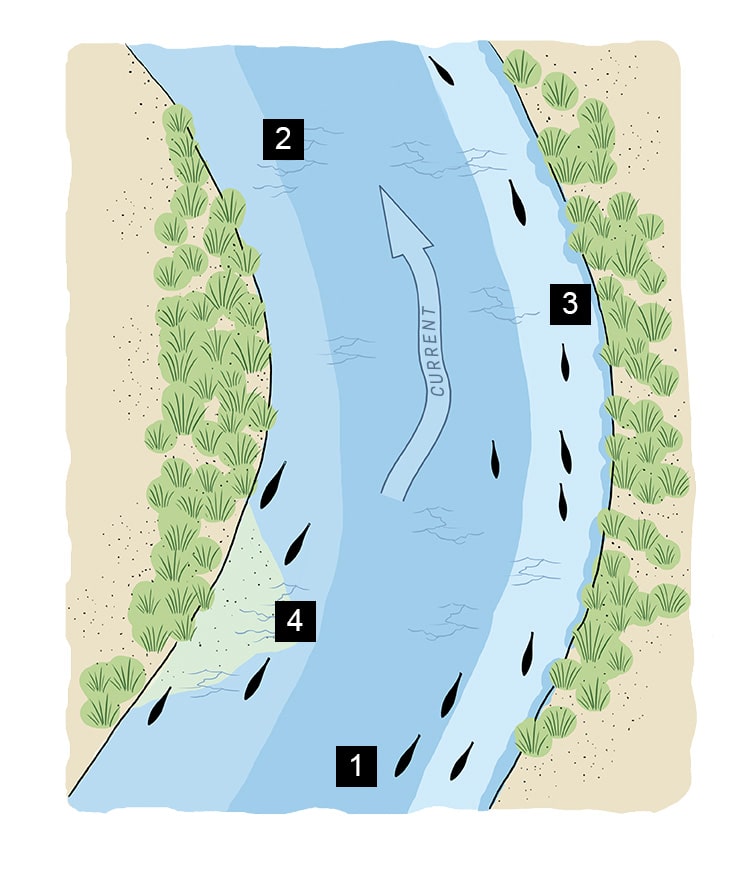
Fast Facts for Success
• Interpret the Bottom: The configuration of banks and shorelines provides clues to submerged fish hangouts.
• Mind the Tide: Be alert to water flow and tide changes that carry bait to waiting predators.
• Play the Weather: Shallow water warms quickly in winter; deep holes stay cooler in the summer.

